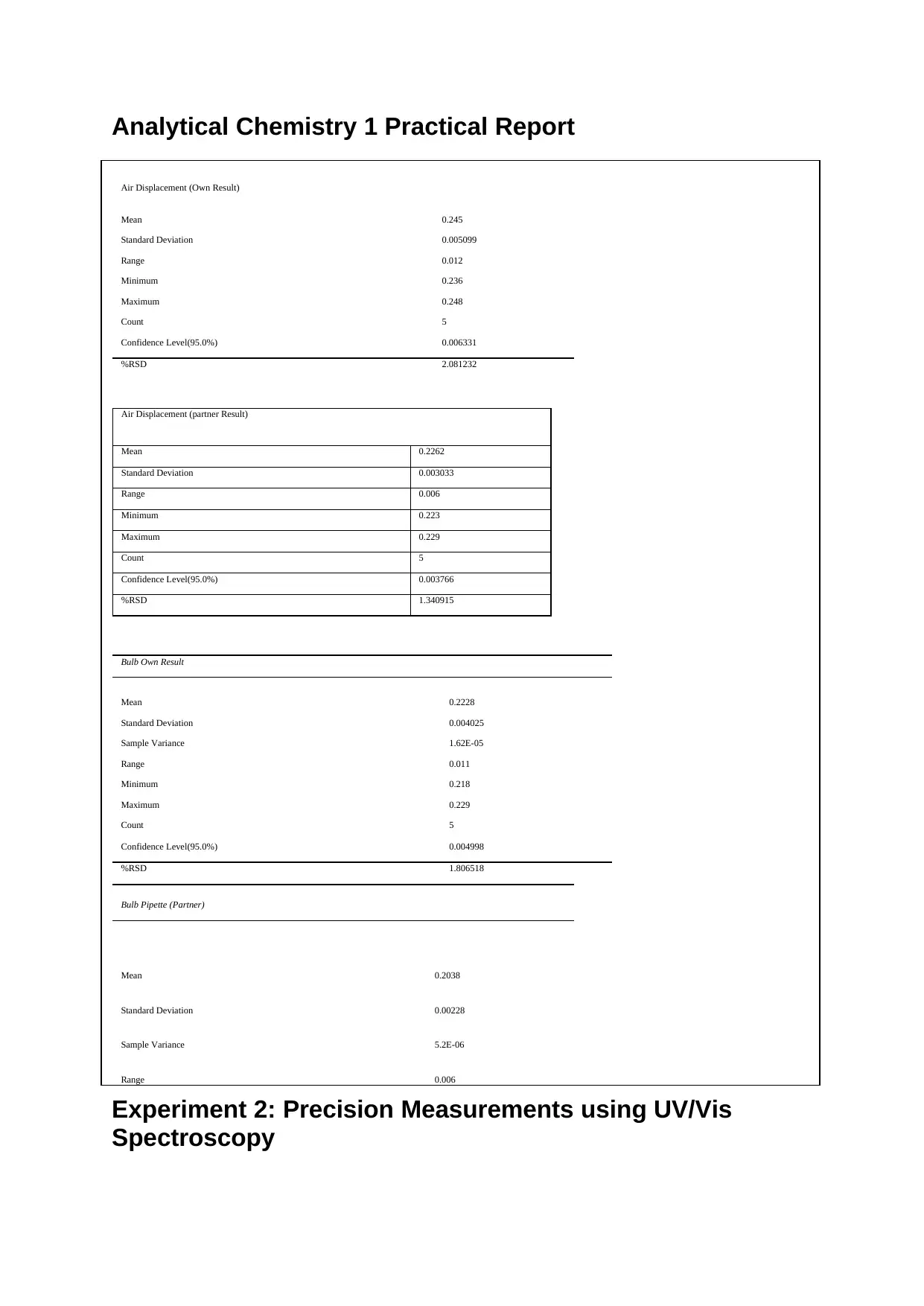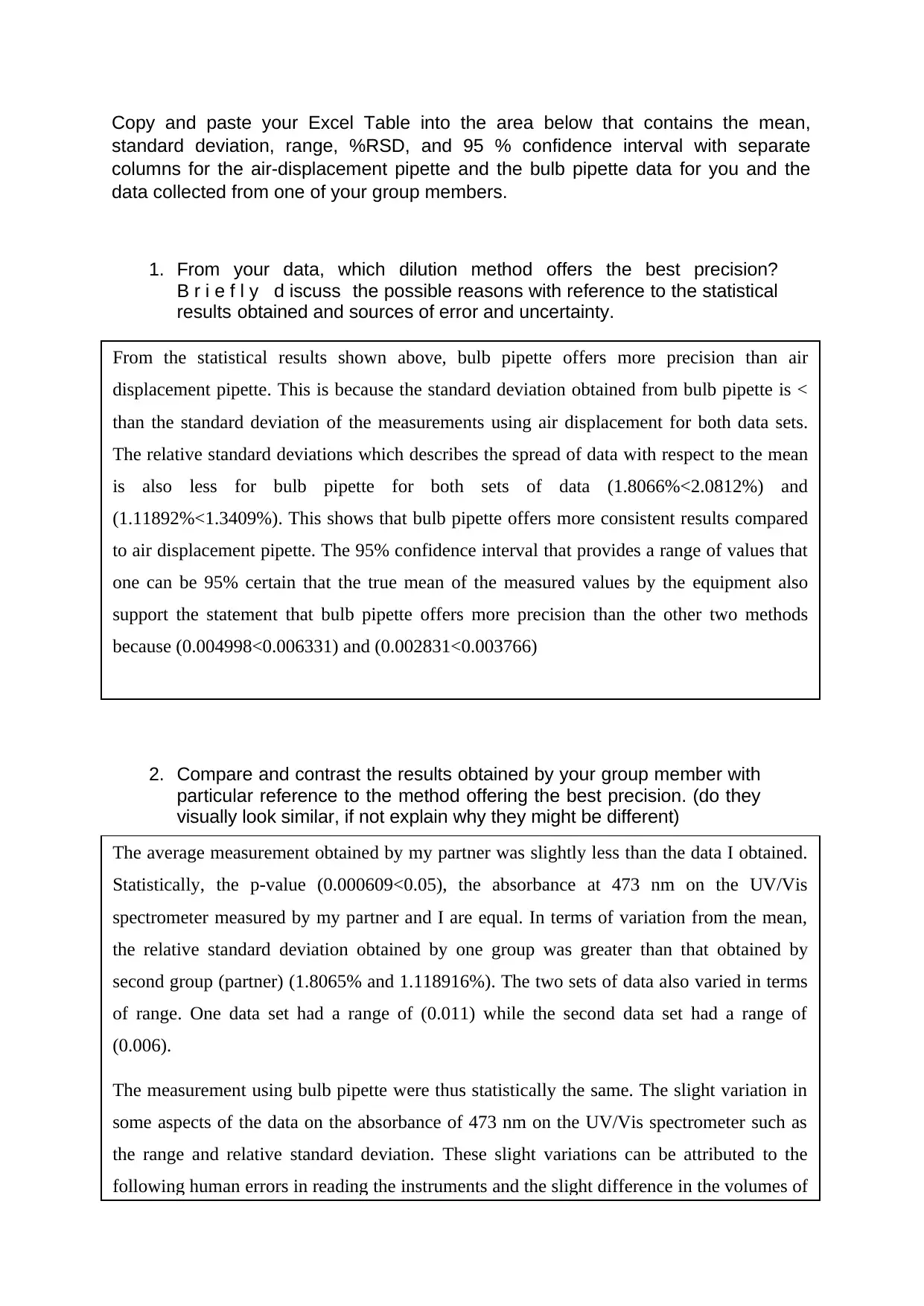Analytical Chemistry 1 Practical Report: Precision Analysis
VerifiedAdded on 2023/01/18
|3
|663
|47
Report
AI Summary
This report presents an analysis of pipetting precision in an analytical chemistry experiment. The student conducted precision measurements using air displacement and bulb pipettes, collecting data on absorbance using UV/Vis spectroscopy. Statistical analyses, including mean, standard deviation, range, %RSD, and confidence intervals, were performed to evaluate the precision of each method. The report compares the precision of the different pipetting techniques, with the bulb pipette demonstrating higher precision based on lower standard deviations and %RSD values. The student also compared their results with a partner's data, discussing similarities, differences, and potential sources of error, such as human error in reading instruments and slight volume variations. The importance of using the same pipette and glassware for repeat measurements to ensure consistency and accuracy is also highlighted. The report concludes by emphasizing the significance of statistical analysis in evaluating experimental results and identifying potential sources of error in analytical chemistry procedures.
1 out of 3





![[object Object]](/_next/static/media/star-bottom.7253800d.svg)